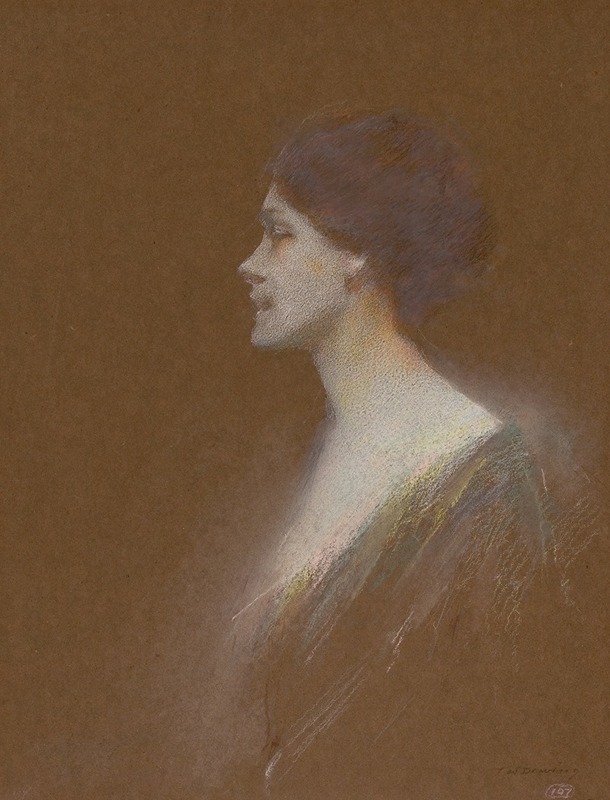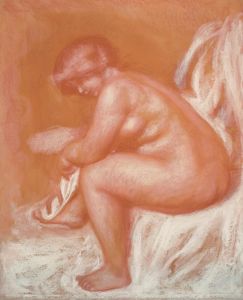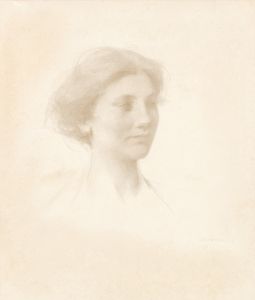
Portrait of a Woman
A hand-painted replica of Thomas Wilmer Dewing’s masterpiece Portrait of a Woman, meticulously crafted by professional artists to capture the true essence of the original. Each piece is created with museum-quality canvas and rare mineral pigments, carefully painted by experienced artists with delicate brushstrokes and rich, layered colors to perfectly recreate the texture of the original artwork. Unlike machine-printed reproductions, this hand-painted version brings the painting to life, infused with the artist’s emotions and skill in every stroke. Whether for personal collection or home decoration, it instantly elevates the artistic atmosphere of any space.
Thomas Wilmer Dewing's Portrait of a Woman is a painting created by the American artist known for his contributions to the Tonalist movement. Dewing, born in 1851 and active during the late 19th and early 20th centuries, is celebrated for his refined and poetic depictions of women, often set against ethereal and dreamlike backgrounds. His works frequently explore themes of beauty, introspection, and the interplay between figure and atmosphere.
Portrait of a Woman exemplifies Dewing's characteristic style, which blends subtle tonal harmonies with a focus on the elegance and grace of his subjects. The painting portrays a seated woman, rendered with delicate brushwork and a muted color palette. Dewing's attention to detail in the figure's pose and expression conveys a sense of quiet contemplation. The background is understated, allowing the viewer's attention to remain on the subject while also contributing to the overall mood of serenity and introspection.
Dewing often worked with models in his studio, and his paintings reflect his interest in the aesthetic ideals of the Gilded Age, a period in American history marked by a fascination with refinement and cultural sophistication. His works are sometimes associated with the Aesthetic Movement, which emphasized art for art's sake and the pursuit of beauty over narrative or moral content.
The exact date of Portrait of a Woman is not definitively documented, but it aligns with Dewing's mature period, during which he produced many of his most acclaimed works. The painting is an example of his mastery of tonalism, a style characterized by the use of soft, diffused light and a limited color range to create a harmonious and atmospheric effect.
Dewing's works, including Portrait of a Woman, are held in high regard and can be found in the collections of major institutions such as the Smithsonian American Art Museum and the Freer Gallery of Art. These institutions have contributed to the preservation and study of Dewing's legacy, ensuring that his contributions to American art continue to be appreciated.
As with many of Dewing's paintings, Portrait of a Woman invites viewers to reflect on the quiet elegance and timeless beauty of its subject, embodying the artist's dedication to creating works that transcend the ordinary and evoke a sense of the sublime.


















